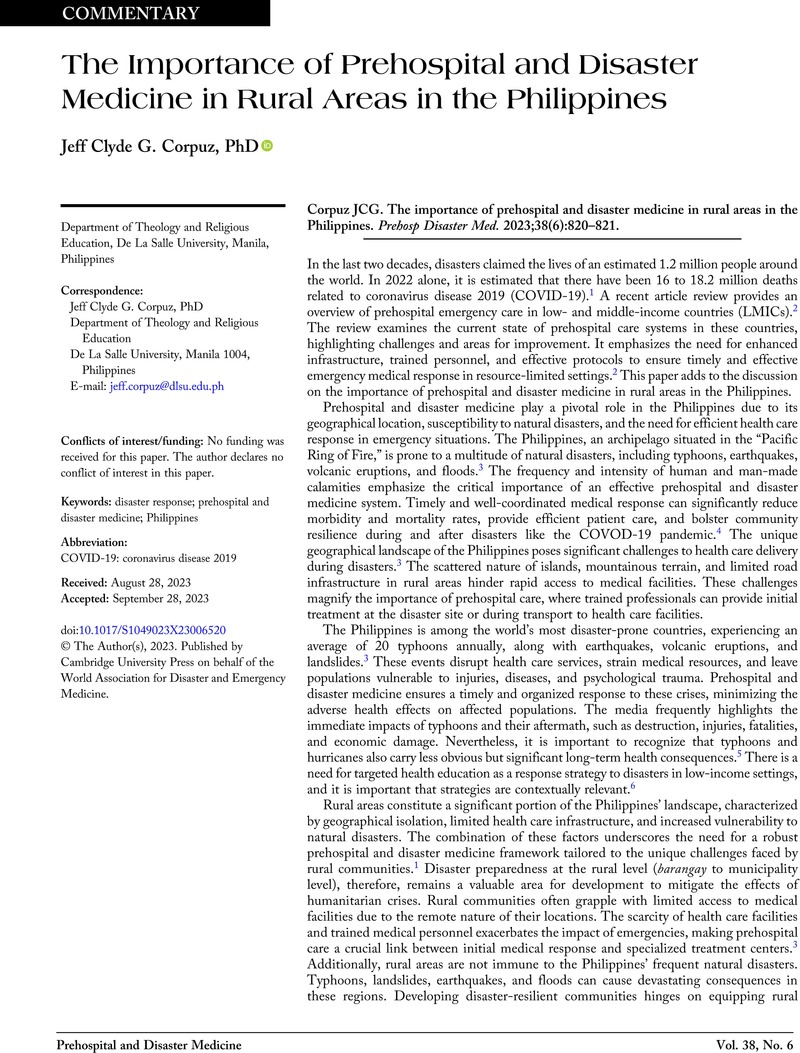No CrossRef data available.
Article contents
The Importance of Prehospital and Disaster Medicine in Rural Areas in the Philippines
Published online by Cambridge University Press: 08 November 2023
Abstract
An abstract is not available for this content so a preview has been provided. Please use the Get access link above for information on how to access this content.

- Type
- Article Commentary
- Information
- Copyright
- © The Author(s), 2023. Published by Cambridge University Press on behalf of the World Association for Disaster and Emergency Medicine
References
Stratton, SJ. The COVID-19 pandemic: successes and failures in prevention and response. Prehosp Disaster Med. 2023;38(4):427–429.CrossRefGoogle ScholarPubMed
Bhattarai, HK, Bhusal, S, Barone-Adesi, F, Hubloue, I. Prehospital emergency care in low- and middle-income countries: a systematic review. Prehosp Disaster Med. 2023;38(4):495–512.CrossRefGoogle ScholarPubMed
Corpuz, JC. Disaster response during super typhoons in the Philippines. Prehosp Disaster Med. 2023;38(1):135–136.CrossRefGoogle Scholar
Corpuz, JCG. Disaster management during war and COVID-19: humanitarian and prehospital interventions. Prehosp Disaster Med. 2022;37(4):566–567.CrossRefGoogle ScholarPubMed
Chan, EY, Liu, S, Hung, KK. Typhoon Haiyan and beyond. Lancet. 2013;382(9908):1873.CrossRefGoogle ScholarPubMed
Lau, LL, Hung, N, Go, DJ, et al. Knowledge, attitudes, and practices of COVID-19 among income-poor households in the Philippines: a cross-sectional study. J Glob Health. 2020;10(1):011007.CrossRefGoogle ScholarPubMed
Murray, R, Cristobal, F, Shrestha, S, et al. COVID-19 fosters social accountability in medical education. Rural Remote Health. 2022;22(2):6998.Google ScholarPubMed
Corpuz, JCG. Inequalities and inequities during the pandemic: rich nations must also care for the poor. Asia Pac J Public Health. 2022;34(2-3):320–321.CrossRefGoogle ScholarPubMed
Corpuz, JCG. Multisectoral Approach on COVID-19 vaccination: a proposed solution on vaccine hesitancy. J Public Health (Oxf). 2021;43(2):e370–e371.CrossRefGoogle ScholarPubMed



